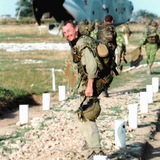Telegram Group »
Singapore »
Газета «СПЕЦНАЗ РОССИИ», журнал «РАЗВЕДЧИКЪ» »
Telegram Webview »
Post 31260
ПЕРВОНАЧАЛЬНЫЙ ЦВЕТ БЕРЕТОВ СОВЕТСКИХ ДЕСАНТНИКОВ – МАЛИНОВЫЙ! Для наших новых читателей
В 1967 году была утверждена униформа ВДВ СССР, с беретом и знаками различия малинового цвета. Именно в такой униформы десантники были представлены на параде в Москве. Однако, командующий ВДВ генерал-полковник Василий Маргелов поставил резолюцию: «Оставить для парадов в Москве».
С правой стороны берета располагался голубой флажок с эмблемой ВДВ, а спереди — звезда в венке из колосьев. У офицеров на берете носилась кокарда с эмблемой образца 1955 года и летная эмблема (звезда с крыльями). Малиновые береты стали поступать на снабжение в войска в августе-сентябре 1967 года. На военном параде 7 ноября 1967 года впервые по Красной площади прошли парашютно-десантные подразделения в новой форме и беретах. Несколько позже малиновые береты были заменены на голубые.
#ВДВ #Армия
В 1967 году была утверждена униформа ВДВ СССР, с беретом и знаками различия малинового цвета. Именно в такой униформы десантники были представлены на параде в Москве. Однако, командующий ВДВ генерал-полковник Василий Маргелов поставил резолюцию: «Оставить для парадов в Москве».
С правой стороны берета располагался голубой флажок с эмблемой ВДВ, а спереди — звезда в венке из колосьев. У офицеров на берете носилась кокарда с эмблемой образца 1955 года и летная эмблема (звезда с крыльями). Малиновые береты стали поступать на снабжение в войска в августе-сентябре 1967 года. На военном параде 7 ноября 1967 года впервые по Красной площади прошли парашютно-десантные подразделения в новой форме и беретах. Несколько позже малиновые береты были заменены на голубые.
#ВДВ #Армия
🫡18❤🔥6❤4🔥3👍1
group-telegram.com/specnazAlpha/31260
Create:
Last Update:
Last Update:
ПЕРВОНАЧАЛЬНЫЙ ЦВЕТ БЕРЕТОВ СОВЕТСКИХ ДЕСАНТНИКОВ – МАЛИНОВЫЙ! Для наших новых читателей
В 1967 году была утверждена униформа ВДВ СССР, с беретом и знаками различия малинового цвета. Именно в такой униформы десантники были представлены на параде в Москве. Однако, командующий ВДВ генерал-полковник Василий Маргелов поставил резолюцию: «Оставить для парадов в Москве».
С правой стороны берета располагался голубой флажок с эмблемой ВДВ, а спереди — звезда в венке из колосьев. У офицеров на берете носилась кокарда с эмблемой образца 1955 года и летная эмблема (звезда с крыльями). Малиновые береты стали поступать на снабжение в войска в августе-сентябре 1967 года. На военном параде 7 ноября 1967 года впервые по Красной площади прошли парашютно-десантные подразделения в новой форме и беретах. Несколько позже малиновые береты были заменены на голубые.
#ВДВ #Армия
В 1967 году была утверждена униформа ВДВ СССР, с беретом и знаками различия малинового цвета. Именно в такой униформы десантники были представлены на параде в Москве. Однако, командующий ВДВ генерал-полковник Василий Маргелов поставил резолюцию: «Оставить для парадов в Москве».
С правой стороны берета располагался голубой флажок с эмблемой ВДВ, а спереди — звезда в венке из колосьев. У офицеров на берете носилась кокарда с эмблемой образца 1955 года и летная эмблема (звезда с крыльями). Малиновые береты стали поступать на снабжение в войска в августе-сентябре 1967 года. На военном параде 7 ноября 1967 года впервые по Красной площади прошли парашютно-десантные подразделения в новой форме и беретах. Несколько позже малиновые береты были заменены на голубые.
#ВДВ #Армия
BY Газета «СПЕЦНАЗ РОССИИ», журнал «РАЗВЕДЧИКЪ»
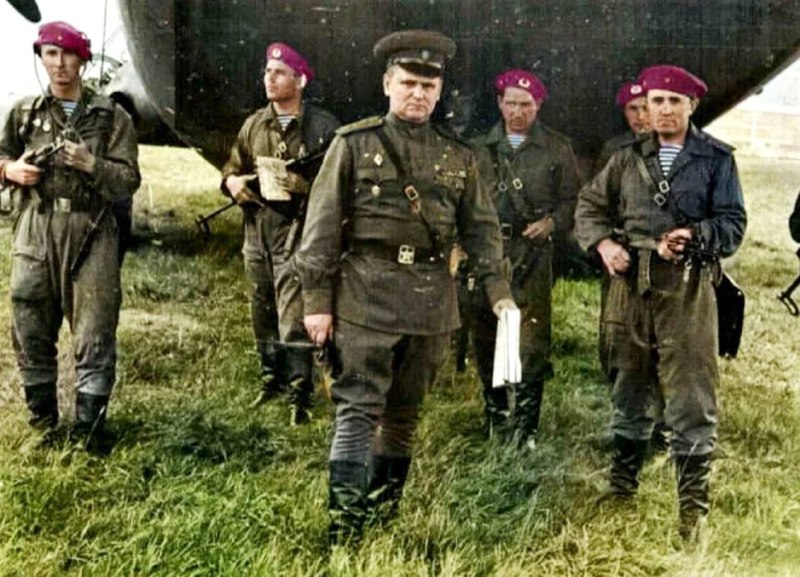
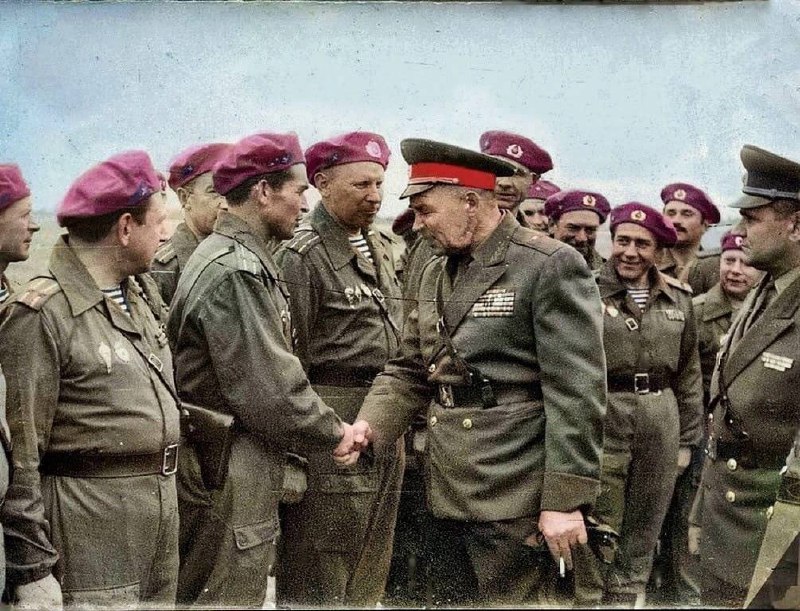
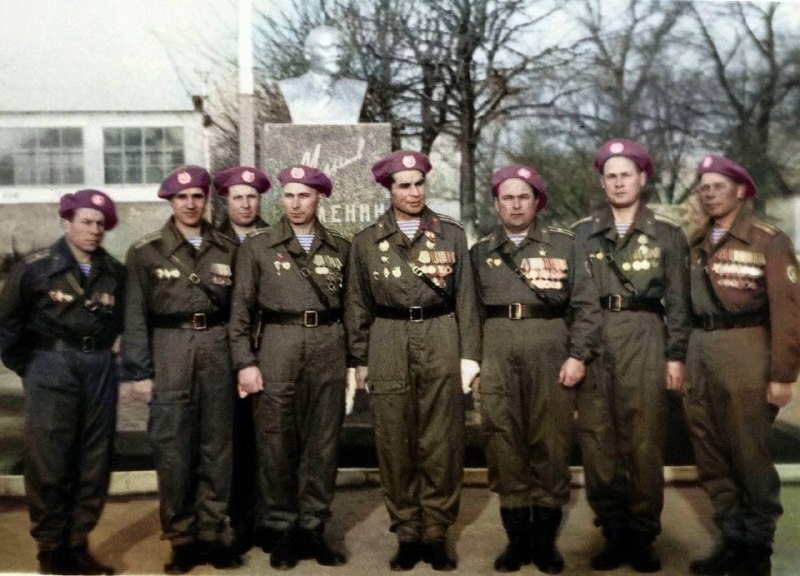
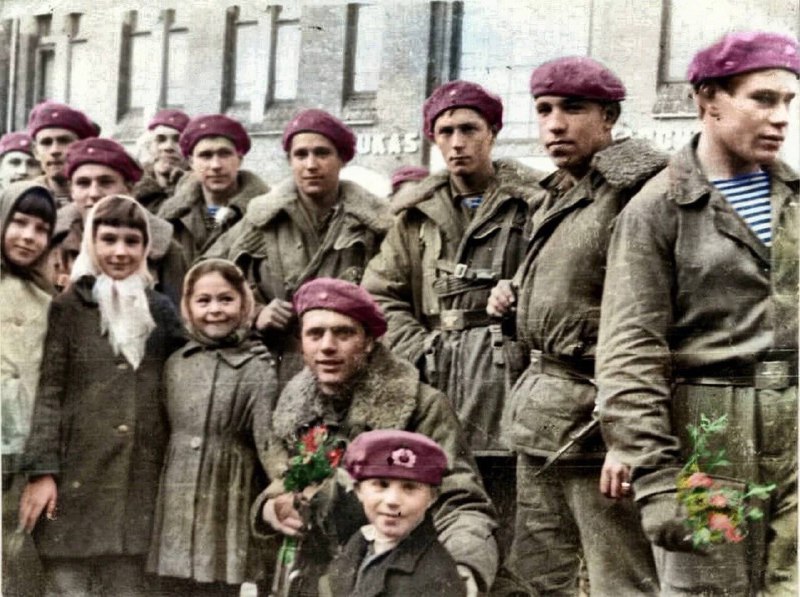
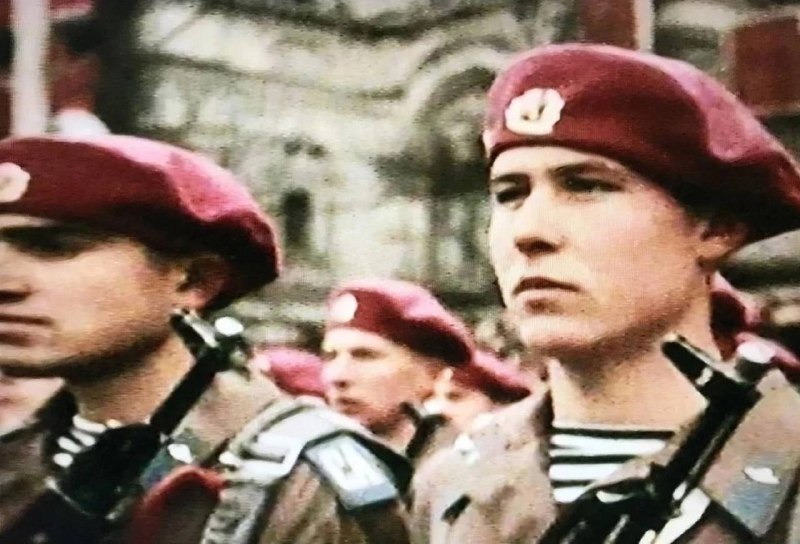
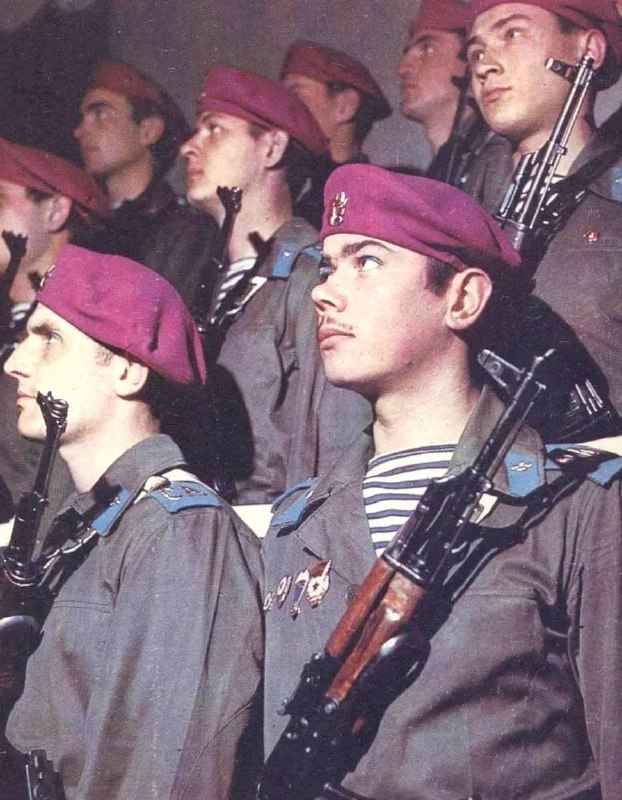
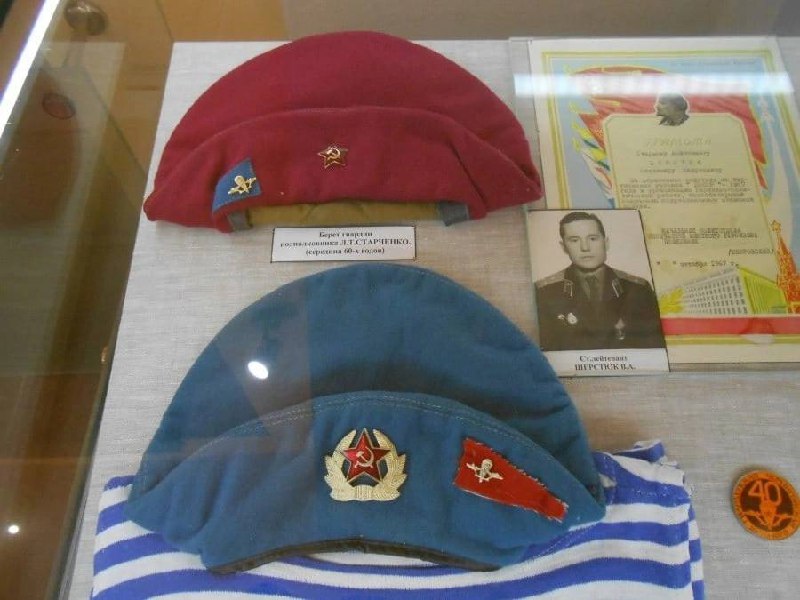
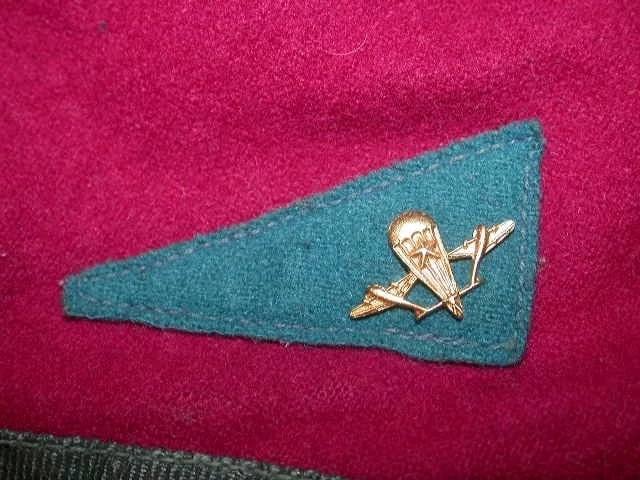
Share with your friend now:
group-telegram.com/specnazAlpha/31260
